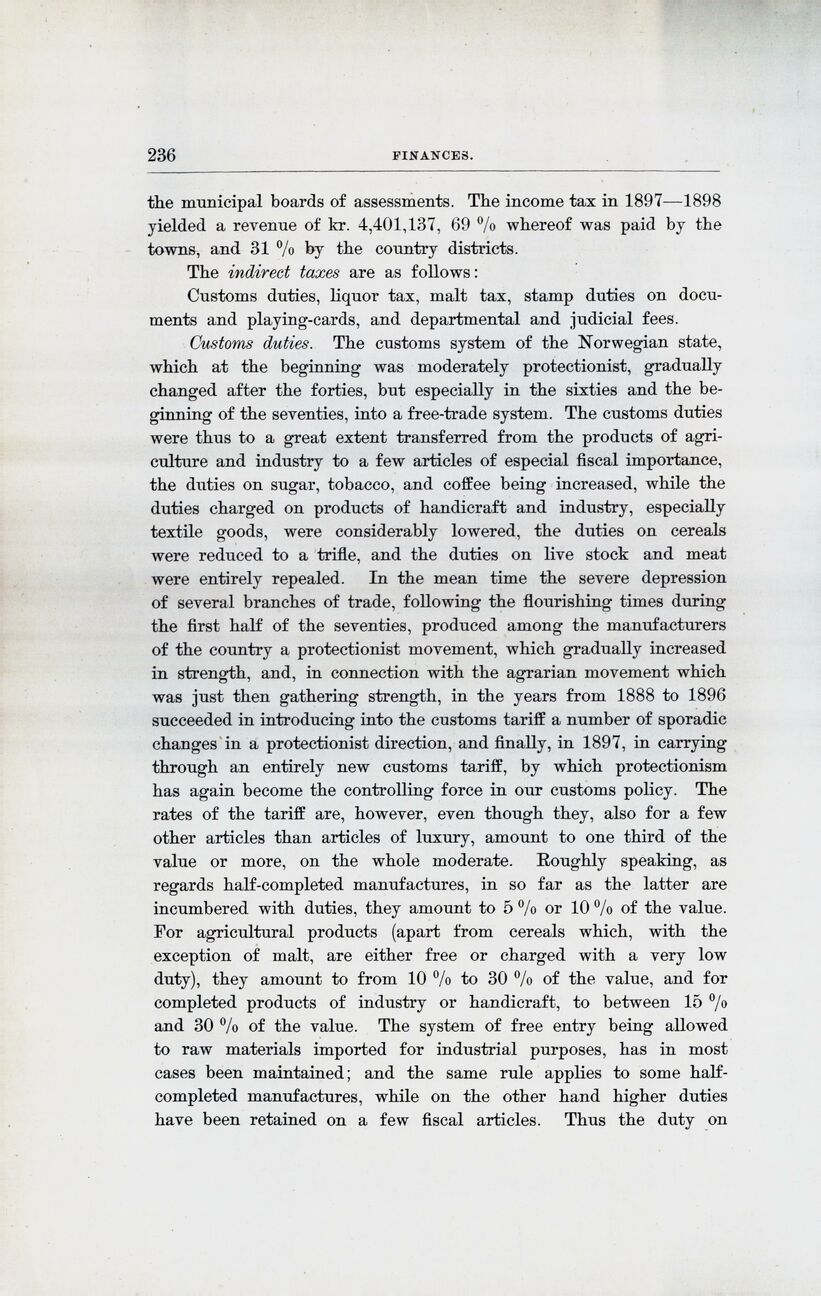
Full resolution (JPEG) - On this page / på denna sida - Finances, by J. J. Woxen

<< prev. page << föreg. sida << >> nästa sida >> next page >>
Below is the raw OCR text
from the above scanned image.
Do you see an error? Proofread the page now!
Här nedan syns maskintolkade texten från faksimilbilden ovan.
Ser du något fel? Korrekturläs sidan nu!
This page has been proofread at least once.
(diff)
(history)
Denna sida har korrekturlästs minst en gång.
(skillnad)
(historik)
the municipal boards of assessments. The income tax in 1897—1898
yielded a revenue of kr. 4,401,137, 69 % whereof was paid by the
towns, and 31 % by the country districts.
The indirect taxes are as follows:
Customs duties, liquor tax, malt tax, stamp duties on
documents and playing-cards, and departmental and judicial fees.
Customs duties. The customs system of the Norwegian state,
which at the beginning was moderately protectionist, gradually
changed after the forties, but especially in the sixties and the
beginning of the seventies, into a free-trade system. The customs duties
were thus to a great extent transferred from the products of
agriculture and industry to a few articles of especial fiscal importance,
the duties on sugar, tobacco, and coffee being increased, while the
duties charged on products of handicraft and industry, especially
textile goods, were considerably lowered, the duties on cereals
were reduced to a trifle, and the duties on live stock and meat
were entirely repealed. In the mean time the severe depression
of several branches of trade, following the flourishing times during
the first half of the seventies, produced among the manufacturers
of the country a protectionist movement, which gradually increased
in strength, and, in connection with the agrarian movement which
was just then gathering strength, in the years from 1888 to 1896
succeeded in introducing into the customs tariff a number of sporadic
changes in a protectionist direction, and finally, in 1897, in carrying
through an entirely new customs tariff, by which protectionism
has again become the controlling force in our customs policy. The
rates of the tariff are, however, even though they, also for a few
other articles than articles of luxury, amount to one third of the
value or more, on the whole moderate. Roughly speaking, as
regards half-completed manufactures, in so far as the latter are
incumbered with duties, they amount to 5 % or 10 % of the value.
For agricultural products (apart from cereals which, with the
exception of malt, are either free or charged with a very low
duty), they amount to from 10 % to 30 % of the value, and for
completed products of industry or handicraft, to between 15 %
and 30 % of the value. The system of free entry being allowed
to raw materials imported for industrial purposes, has in most
cases been maintained; and the same rule applies to some
half-completed manufactures, while on the other hand higher duties
have been retained on a few fiscal articles. Thus the duty on
<< prev. page << föreg. sida << >> nästa sida >> next page >>